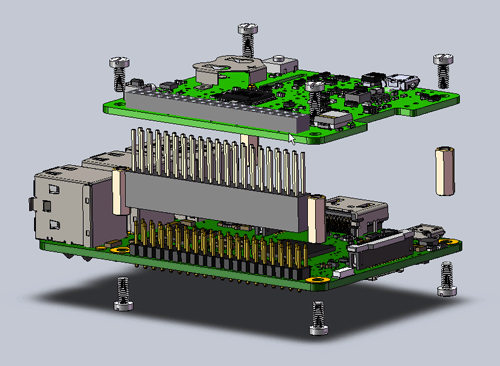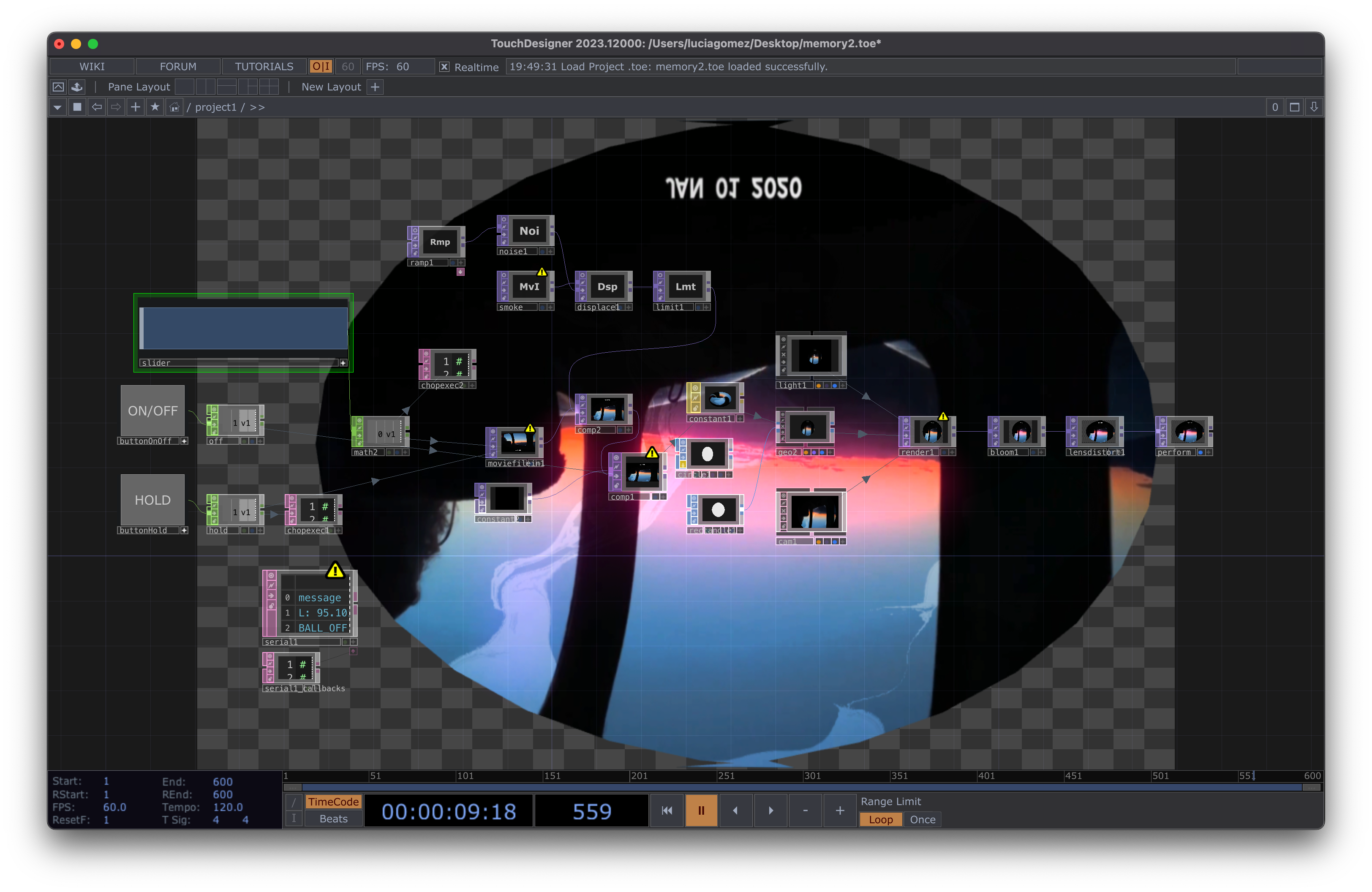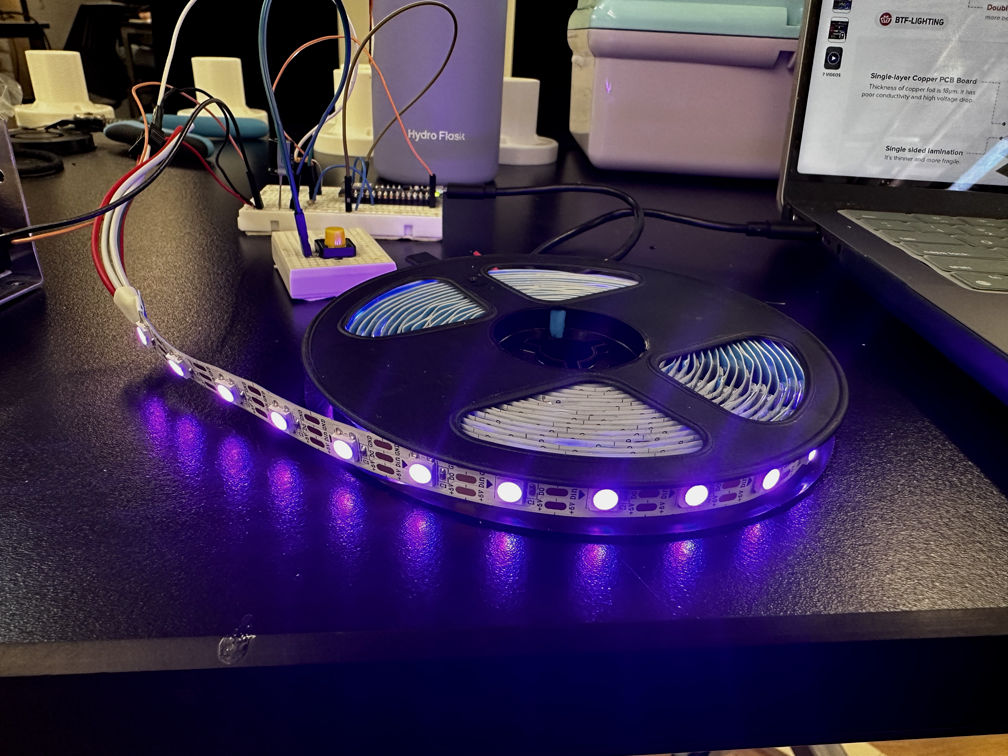In my last blog post I wrote about new tools and technologies that I learned during my summer internship at Deeplocal. As I wrap up a semester at ITP, I feel like I've earned another "level up" achievement as a Creative Technologist. I completed a lot of projects that were outside of my skillset just a year ago. Here's a list of a few tips, tricks, and tools that I've learned during this chaotic semester.
Physical
I'll start with physical tools and techniques that I recently used for the first time. Prior to ITP I had absolutely no physical computing or fabrication skills, so I'm proud of how far I've come here.
Pepper's Ghost
Pepper's Ghost is a centuries-old illusion technique that I've heard about, but never understood. It's a low-tech way to create a hologram effect using an image source (like a screen) and a transparent reflecting surface (like plastic film). I used it for a project where I needed a hologram to appear inside of a sphere... more on that later! An ITP professor pointed me towards this diagram that shows how to make a video of a goldfish appear to be floating inside of a sphere.
 [Pepper's Ghost demonstration in a sphere. The fish video is reflected into the sphere so it looks like it's floating]
[Pepper's Ghost demonstration in a sphere. The fish video is reflected into the sphere so it looks like it's floating]
Meanwell Power Supplies
Until now, all of my physical computing projects have been powered by my laptop's USB port, lipo batteries, or small wall adapters. This semester I had a group project that needed an insane amount of current, about 120 amps. Fortunately one of my friends is doing a bunch of power supply calculations in grad school and suggested that we use multiple power supplies with lower amounts of current to avoid electrocuting ourselves.
 [Thanks Stephanie for keeping me alive]
[Thanks Stephanie for keeping me alive]
I made a little spreadsheet calculator to determine how much power we needed and how to divide it up between multiple power supplies. Eventually my project teammates and I wired 3 of these Meanwell power supplies into our project and learned how to securely screw down the beefy wires with U-shaped crimps.
 [A 5V 40A Meanwell power supply]
[A 5V 40A Meanwell power supply]
Acrylic Solvent
Solvent != glue! With my DJELLO project I laser-cut several layers of acrylic and stacked them together in a non-permanent way. This time I needed layers of acrylic permanently adhered to each other. The answer is acrylic solvent, which looks and feels like water but chemically bonds acrylic in 1 minute. It took some practice to not get splatters everywhere, but the end result looks ok.
[This video helped me avoid some mistakes]
Standoffs
I'd seen classmates build compact, multi-tiered circuit boards that look super professional. I didn't know the name of the piece they used to separate the tiers, but now I know they're called standoffs. Raspberry Pi kits use them for add-on components that sit above the main Pi board. I used some hex standoffs for a 3-tiered circuit board monstrosity -- they were exactly what I needed.
 [The standoffs are the vertical tube-like pieces between the 2 green circuit board layers]
[The standoffs are the vertical tube-like pieces between the 2 green circuit board layers]
Tightly Coiled Wires
I found myself needing to tightly coil long stretches of wire together. Yes, I could have bought a cable of 3 conductor wire but $$$ and a lot of them are too thick for what I needed. Instead a friend showed me how to quickly wrap 3 individual wires together by putting one end in a clamp and the other in the head of a power drill. Stretching the wires until they were taut and revving the drill until they were tightly wrapped worked like a charm! I've passed this hack onto a few other friends.
Heat-set Screw Inserts
I used these at Deeplocal for a project towards the end of my internship, and needed them again at school to create durable screw threads in a 3D print. These inserts sink into plastic 3D prints when you press a hot soldering iron tip into them. So easy to use and way easier than trying to model and print tiny screw threads. I was able to screw and unscrew 3D printed parts together multiple times without worrying about eroding the screw threads.
 [Small brass screw threads that can be inserted into plastic]
[Small brass screw threads that can be inserted into plastic]
Digital
All of my ITP projects exist at the intersection of digital and physical, so of course I got some practice with new software and libraries over the past semester.
TouchDesigner
I've used TouchDesigner before but not very in-depth. After a workshop by resident TouchDesigner god Armon Naeini, I was able to complete a much more involved TD project. More details about the exact project later, but I learned how to
- Create dynamic video loops
- Optimize insanely large video files for smooth playback (HAP encoding)
- Use Python scripting within TD
- Integrate complex controls from Arduino via serial communication
- Display TD output on an external monitor (sounds easy but took me forever to figure out)
I usually hate any kind of node-based software because I just want to write some goddamn code. But I'm warming up to TouchDesigner so much that I'm considering building my entire thesis around it.
 [My TouchDesigner node network to manipulate a large video file]
[My TouchDesigner node network to manipulate a large video file]
Syphon
Last semester I learned how to use MadMapper for projection mapping (old blog post), where I projected video files or static blocks of color onto physical objects. This time I needed to prototype something by projection mapping an interactive website onto a canvas. So I needed to port the output of my Google Chrome browser tab into MadMapper in realtime. The answer to this was Syphon, which MadMapper supports. I'm not even going to pretend to understand what's going on here but I installed Syphoner which let me select a window on my computer to read frames from into MadMapper.
 [Magic Syphoner interface where I'm selecting the current browser window that I'm writing this blog post in]
[Magic Syphoner interface where I'm selecting the current browser window that I'm writing this blog post in]
Syphon seems like a good tool to add to my Creative Technologist kit, because here's a non-exhaustive list of creative technologies that support it. TouchDesigner is on there!
 [I don't know what most of these apps are but they all support Syphon]
[I don't know what most of these apps are but they all support Syphon]
CNC Toolpaths
Another world I had no idea existed. I cut some parts with the ITP shop's CNC router, and the router wasn't a foreign concept to me. But I didn't realize how involved of a process it was to generate toolpaths for the CNC machine. You have to program the machine to tell it exactly how to cut your 3D model out of a sheet of material. I only wanted something as simple as cutting an outline around my shape and drilling some holes, but that took a few office hours with shop staff to figure out. Even still I made a few fabrication mistakes that I had to pay for with physical labor.
 [The thin orange lines show the path the router's drill bit will follow as it cuts out my design]
[The thin orange lines show the path the router's drill bit will follow as it cuts out my design]
p5.riso Library
This library is right up my alley! It's an addition to p5, a popular Javascript library for making art, that lets you prepare files to print on Risograph. I used it in my Riso printing class this semester to create generative designs that are ready to print. You can also upload black and white contact sheets to preview them with various Riso ink color combinations.
 [Some p5 Javascript code side-by-side with a preview of the Risograph output]
[Some p5 Javascript code side-by-side with a preview of the Risograph output]
Fastled Library
Previously I've worked with the Neopixel Arduino library when I need to program some colorful LED strips. This semester I found that Neopixel + RGBW lights can be incompatible with ESP32 microcontrollers, so I switched to a different Arduino library for programming addressable LEDs. Fastled is... fast. I don't know that it's more intuitive to use than Neopixel, but it does update LEDs faster and solved my ESP32 issue.
 [An RGB LED strip controlled by an ESP32 and the Fastled library]
[An RGB LED strip controlled by an ESP32 and the Fastled library]
Axidraw
I used an Axidraw plotter for the first time! Plotters are drawing machines that move a tool very precisely on an XY plane, with control to raise/lower the tool on the Z axis to draw on a surface. Axidraw has a Python library where you can program your own drawing commands in addition to drawing from an SVG file. I'm going to explore this a lot more for my thesis... stay tuned.

